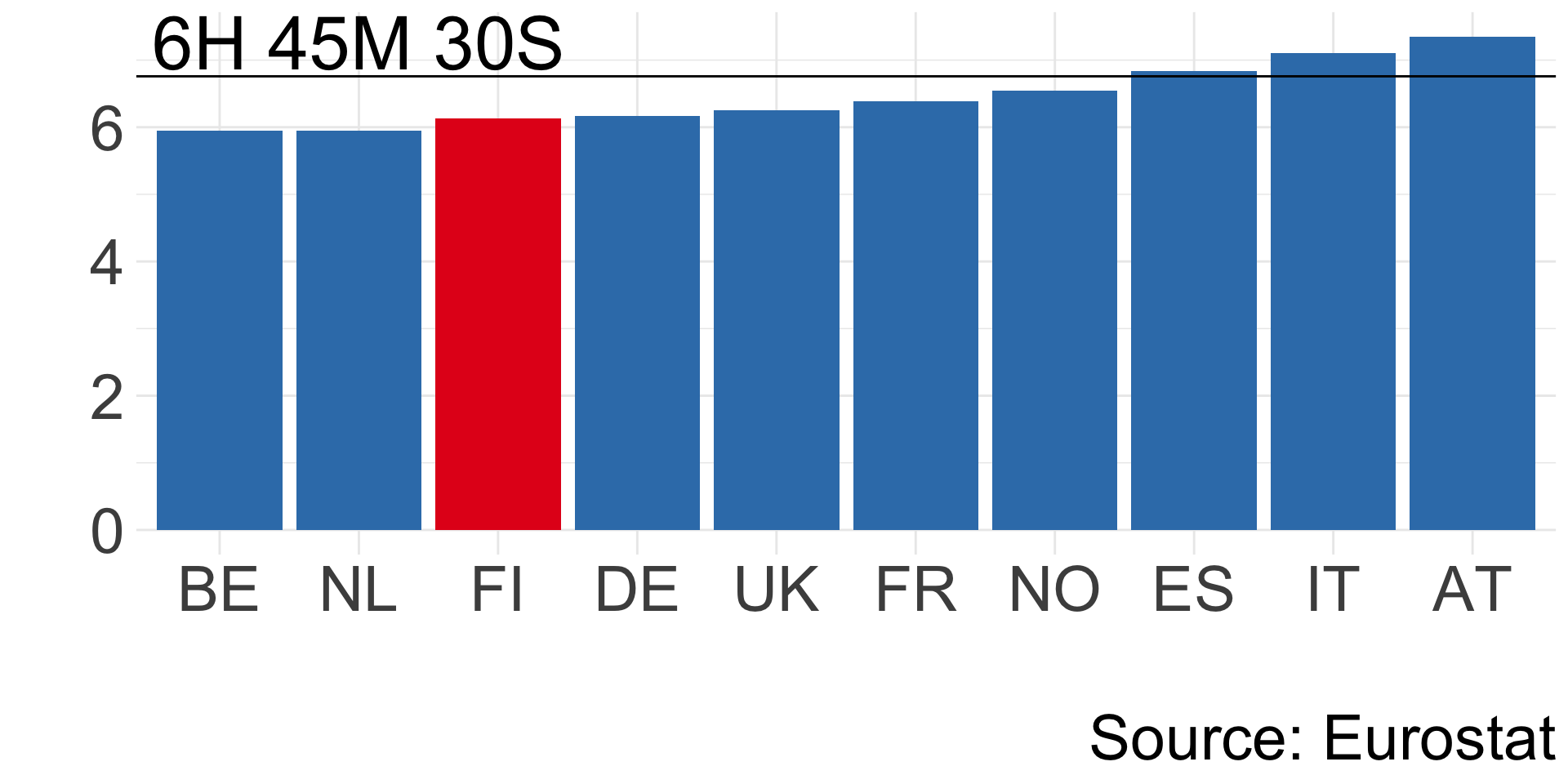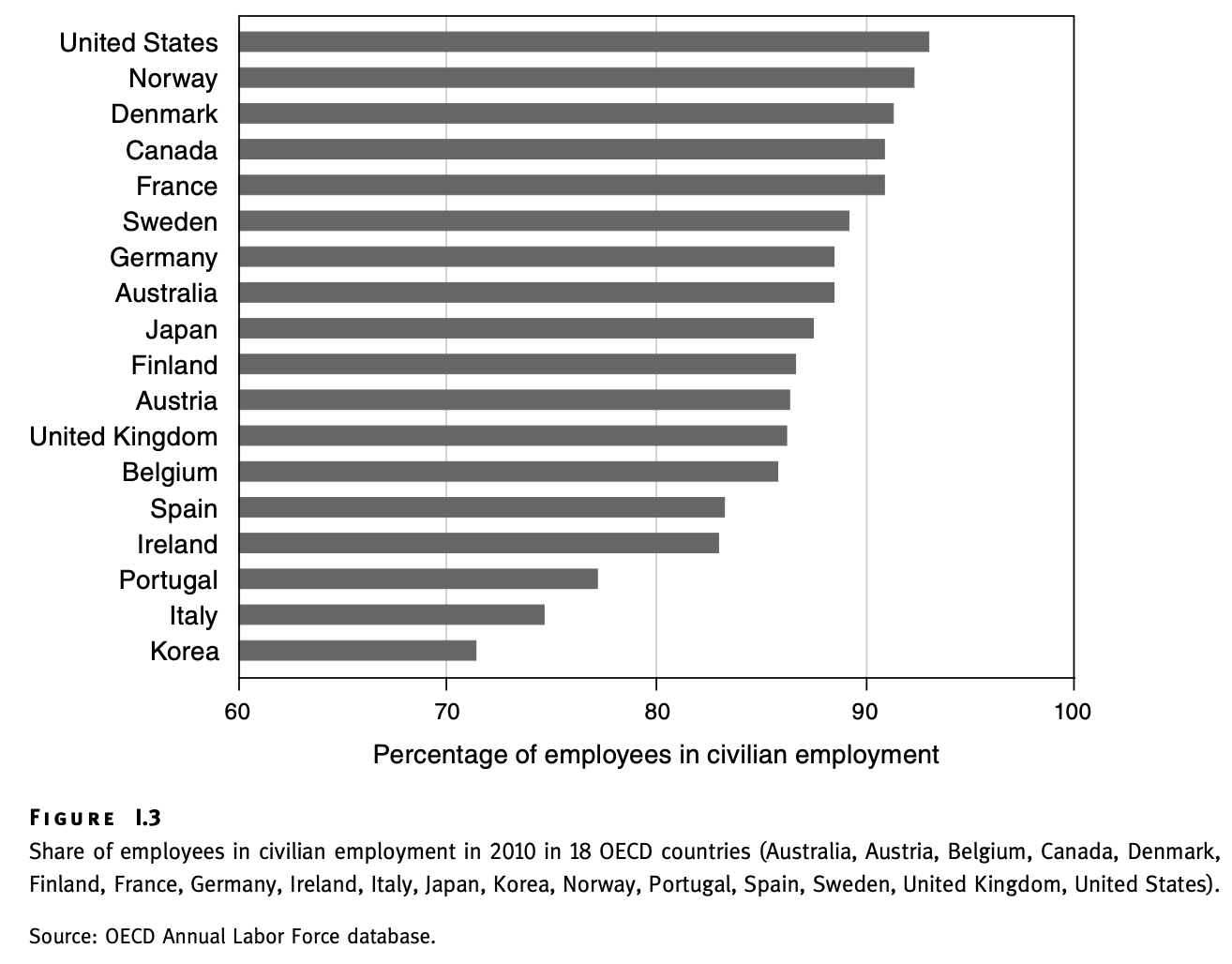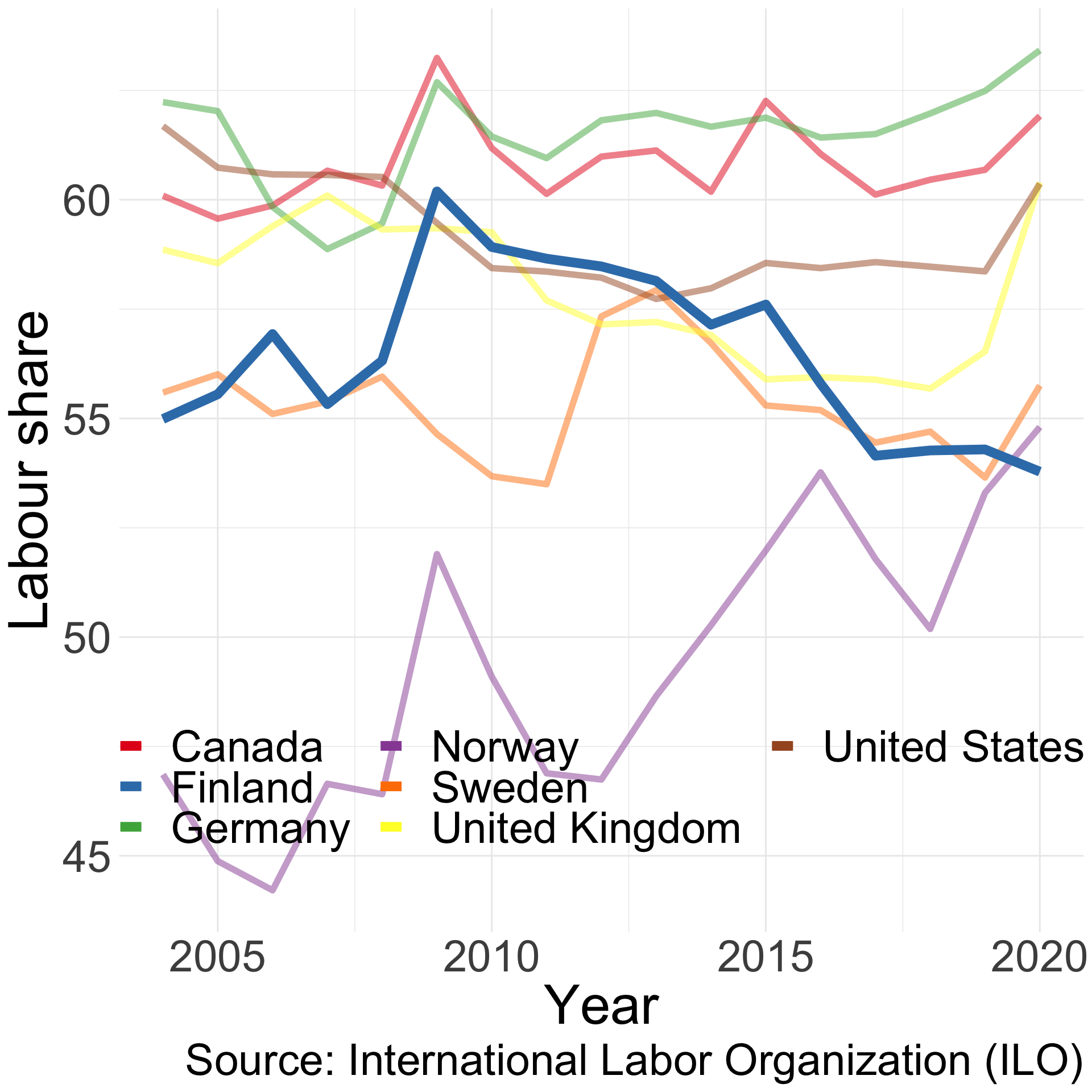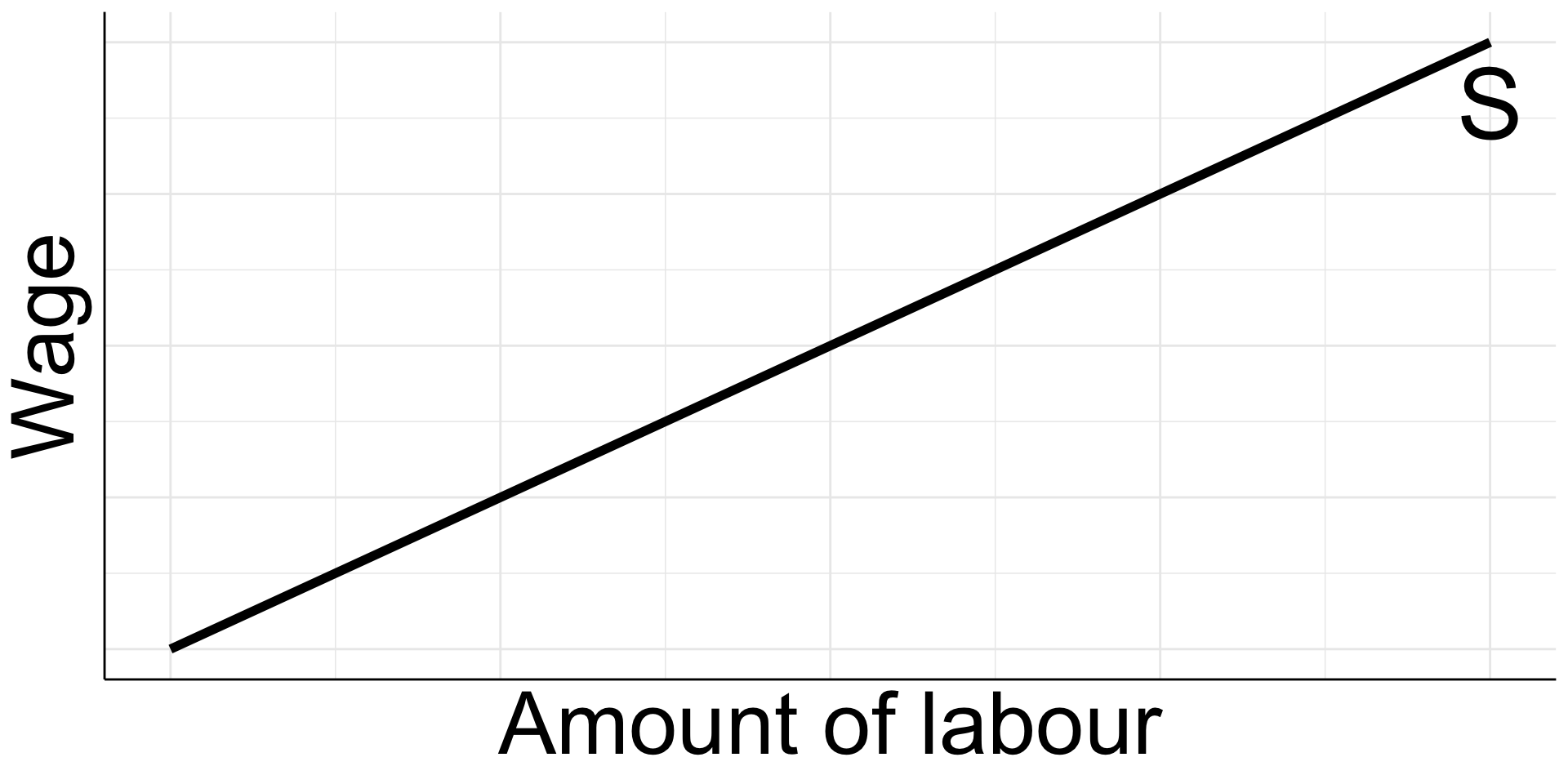
1. Introduction to Labour Economics
KAT.TAL.322 Advanced Course in Labour Economics
March 6, 2024
Course structure
Instructor: Nurfatima Jandarova (nurfatima.jandarova@tuni.fi)
Classes: 90 min lectures twice a week on Wed and Thu 14:00 - 16:00
No class on 21 March!
8 lectures + 2-3 classes devoted to final assessment
All course information on Moodle
Check classrooms on Sisu calendar
No office hours (contact by email)
Final assessment
Short presentation of a research proposal
Choose a topic related to labour economics
- Reading list is a good place to start
- Recent literature surveys (e.g., Journal of Economic Literature)
- Opinion columns (e.g., VoxEU)
Individual or groups of 2-3 students
20-25 min presentations at the end of April
Important
Form groups (on Moodle) by 15 March!
Requirements to research proposals
- Clear research question
- Importance and contribution
Theoretical
- Clear exposition of model
- Comparative statics/predictions/simulations
- ⭐ Plan for testing with the data
Empirical
- Potential dataset (sample, variables)
- Empirical strategy (challenges, assumptions)
- ⭐ Interpretation/potential mechanisms
Tips
Choose a topic early (weeks 1-2)!
Select one published paper as a “template”1
Some useful resources:
Labour Economics
What is Labour Economics?
Labour economics studies how labour markets work.
Main actors in the labour market:
workers (sellers)
firms (buyers)
government
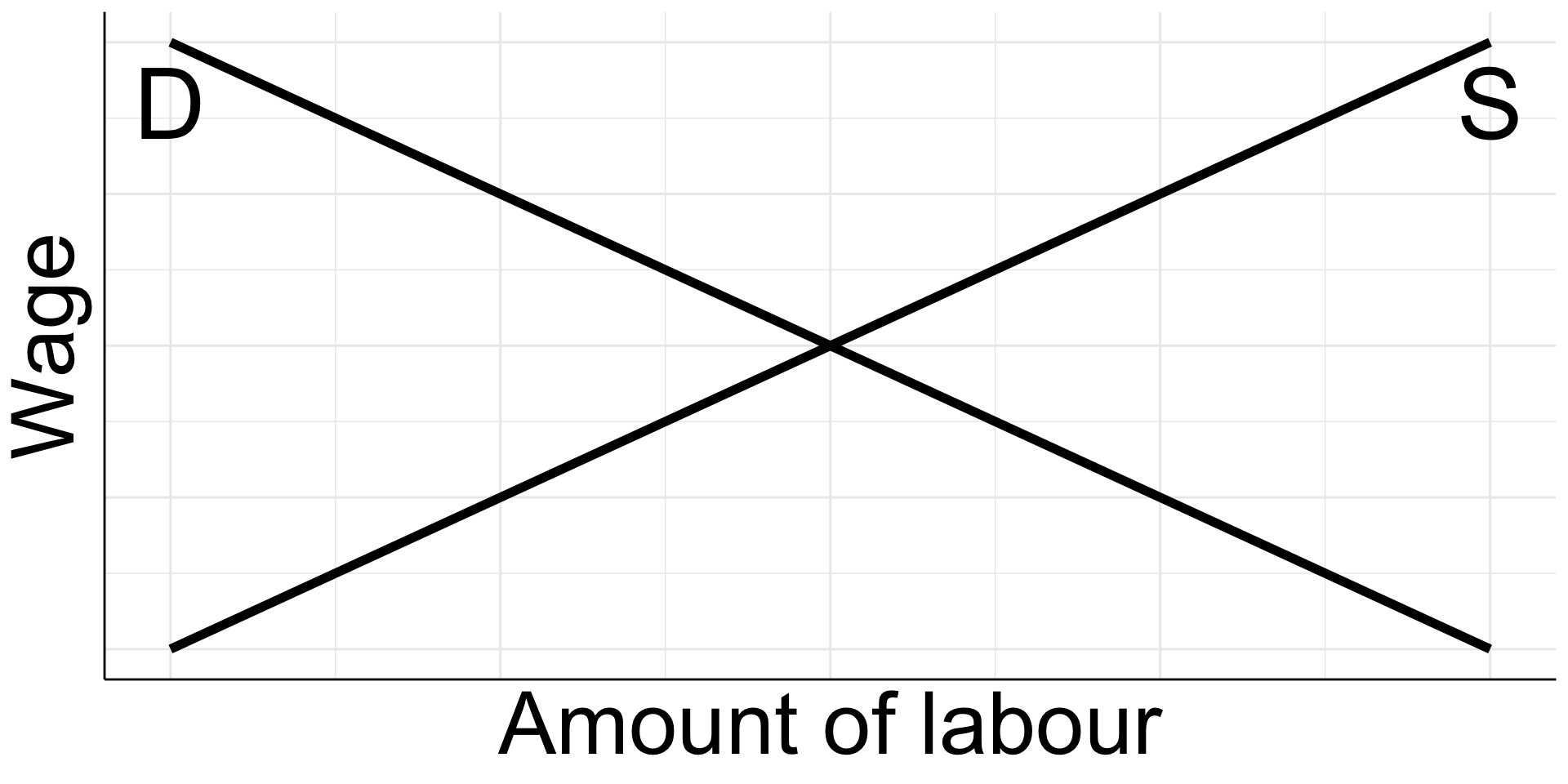
Why study Labour Economics?
Labour market is the largest market.
- Work accounts for ~30% of waking hours
- Employees account for 70-90% of employment
- Labour income accounts for ~60% of total output
Positive vs Normative Economics (do vs should)
Positive economics
How do markets work?
Examples:
- does minimum wage affect employment?
- does AI affect labour demand?
- does tuition fee affect college decision?
Normative economics
How should markets work?
Examples:
- should the minimum wages be abolished?
- should AI firms compensate laid off workers?
- should tuition be financed by loans or grants?
Topics in labour economics
Selected topics
Models of labour supply and demand
Human capital
Technological advances
Gender inequality
Intergenerational mobility
Other topics
Job search and matching
Migration
Trade unions
Taxes and welfare state
Labour markets and economic growth
Example: labour supply
Female labour force participation
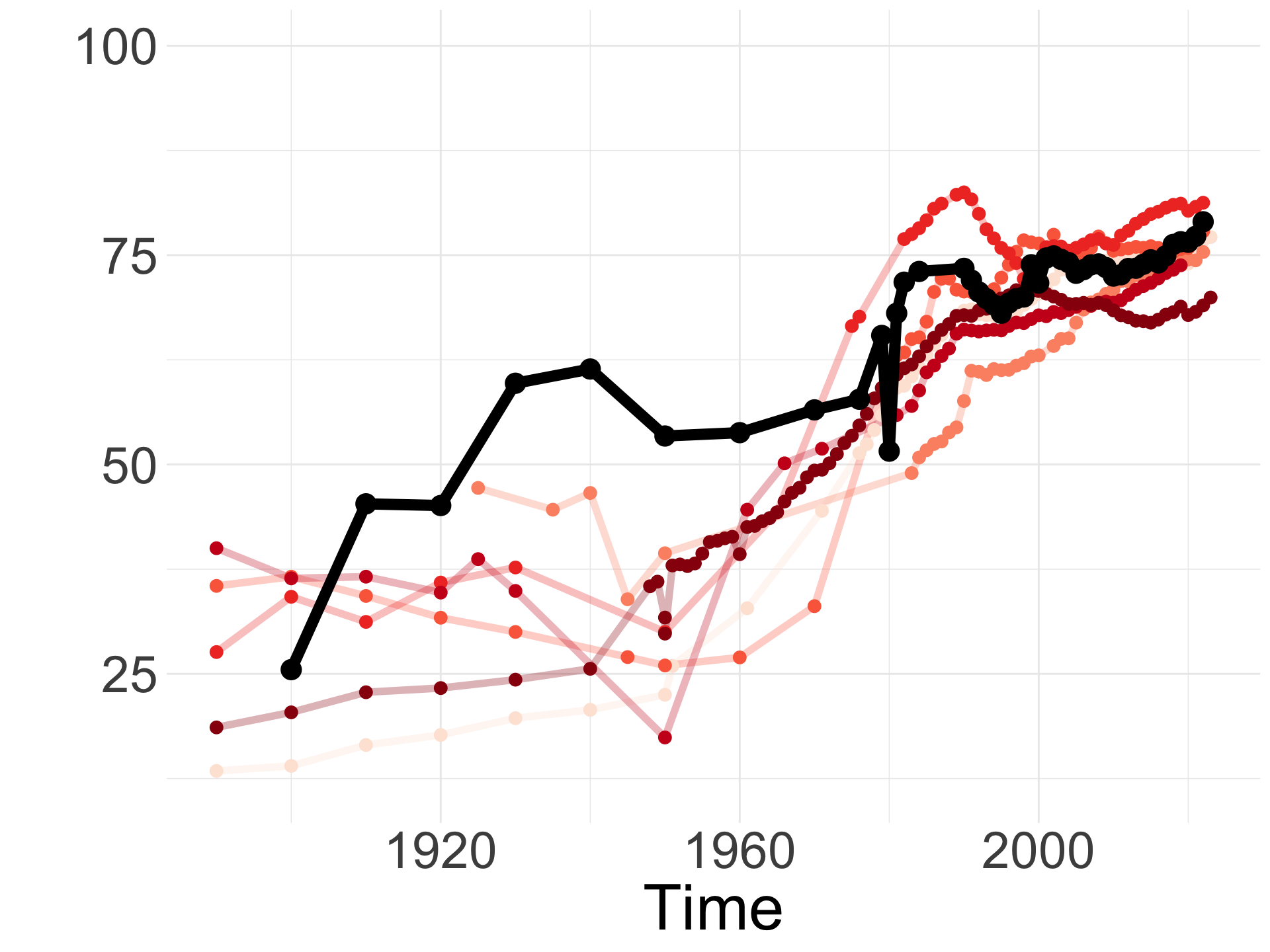
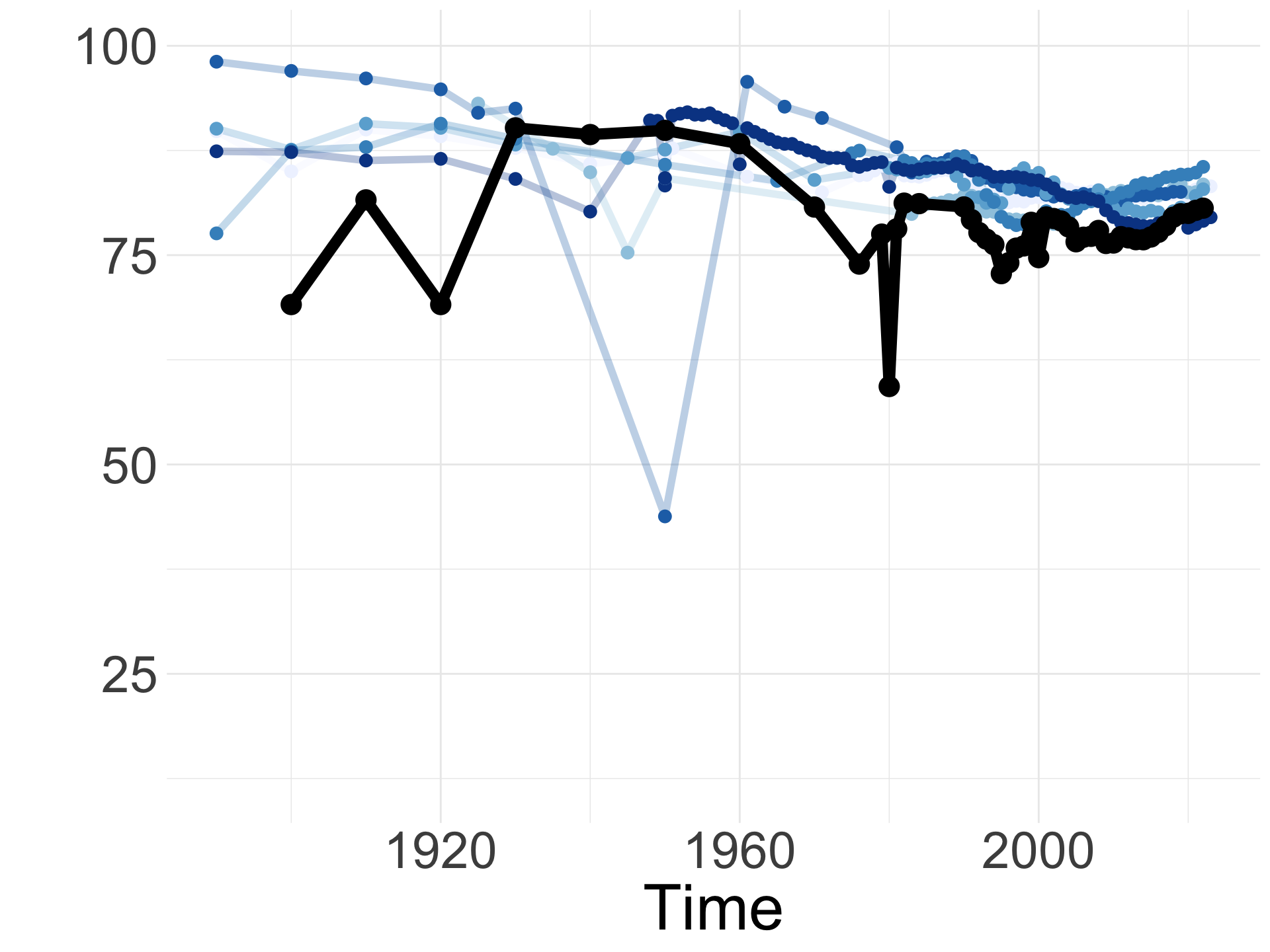
Source: International Labor Organization (ILO) and Olivetti (2013)
Example: labour demand
Computerisation and automation
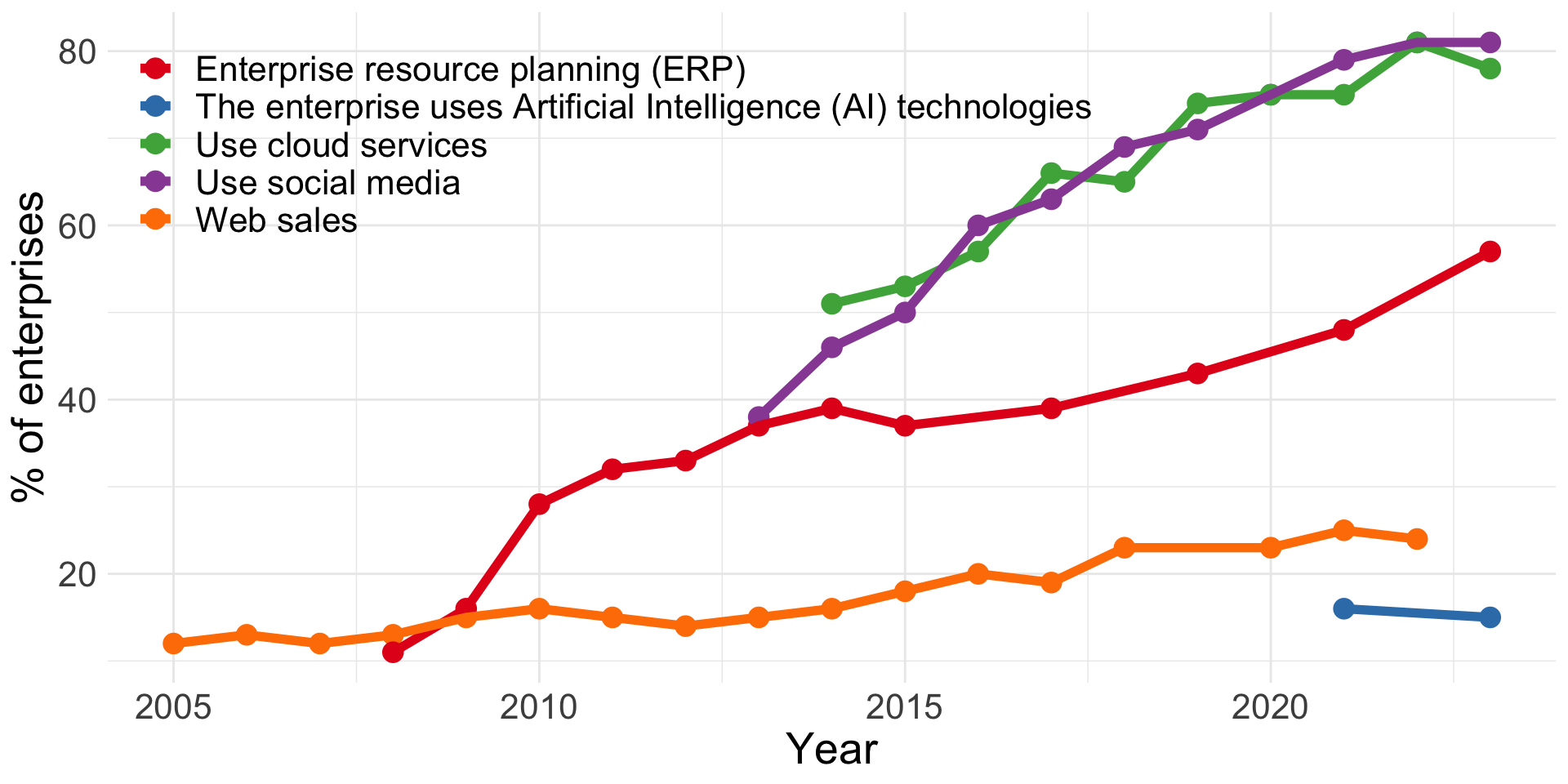
Digitization of workplaces in Finland
Source: Statistics Finland (2024)
50% of jobs face high risk of computerisation
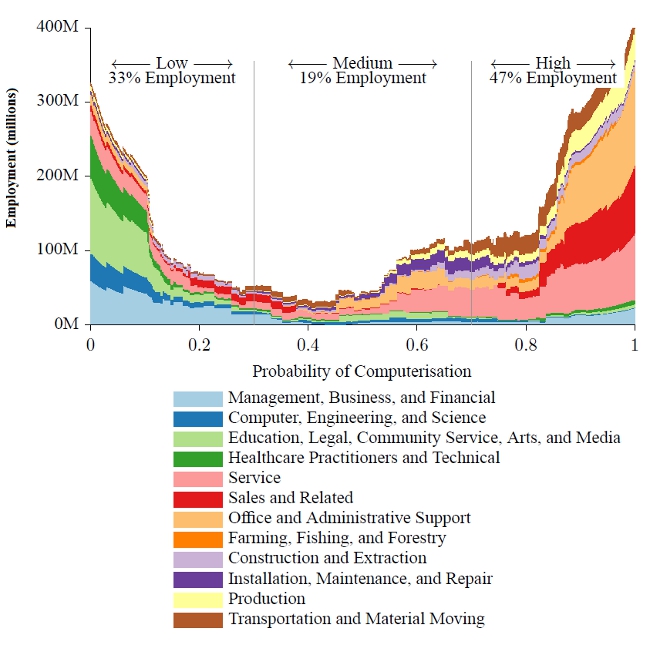
Source: Frey and Osborne (2017)
Example: employment
Minimum wages
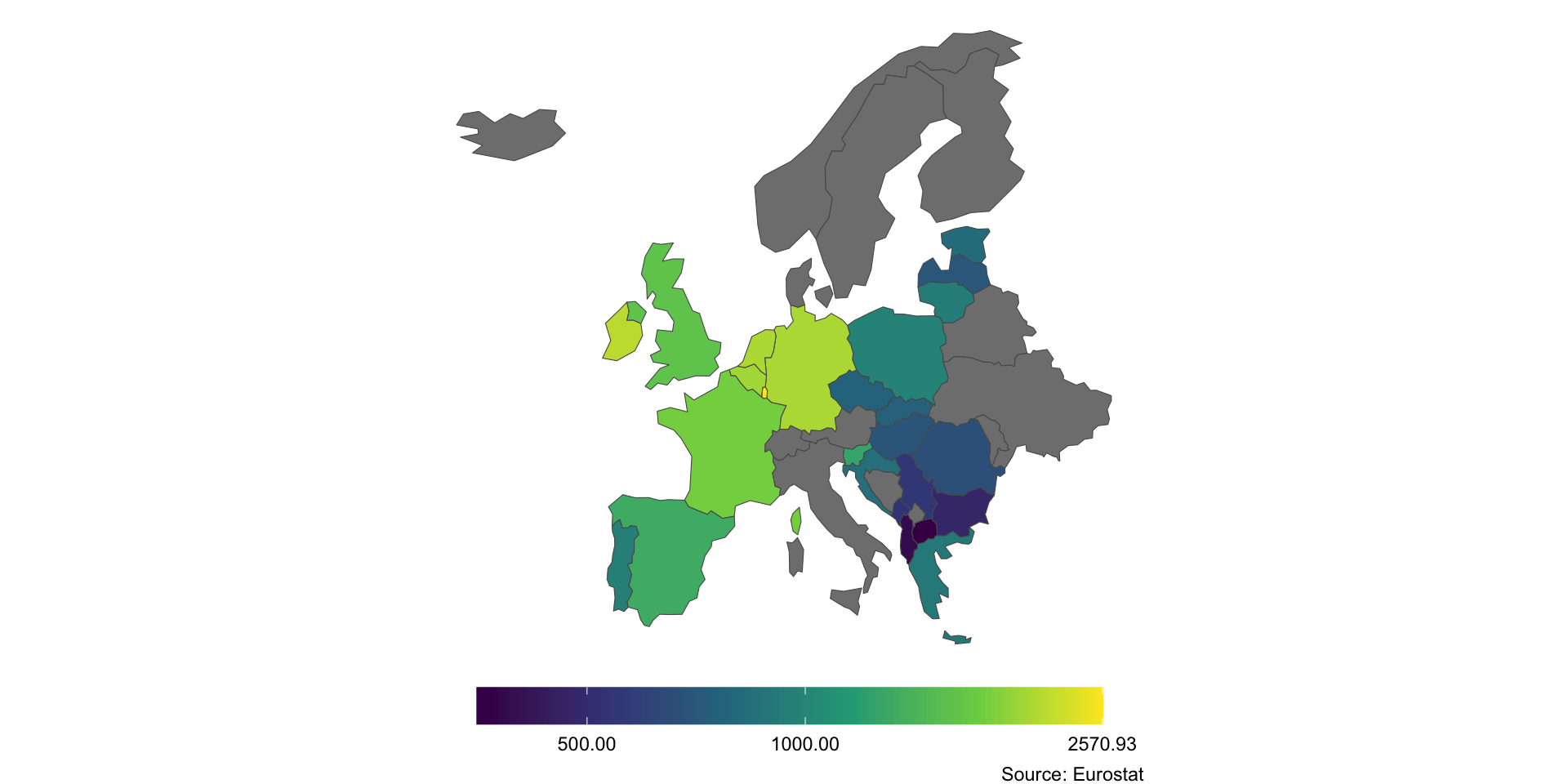
Minimum wages in Europe
Example: human capital
University expansion

Higher education graduates
Example: inequality

Also labour economics topics
Carlana (2019) Implicit Stereotypes: Evidence from Teachers’ Gender Bias
“Teacher stereotypes induce girls to underperform in math”
Doepke and Zilibotti (2019) Love, Money and Parenting
“how economic forces and growing inequality shape how parents raise their children”
Oswald and Powdthavee (2008) Does happiness adapt? A longitudinal study of disability with implications for economists and judges
“people who become disabled go on to exhibit considerable recovery in mental well-being”
Adams-Prassl et al. (2023) The Dynamics of Abusive Relationships
“labor market consequences of cohabiting with an abusive spouse”
